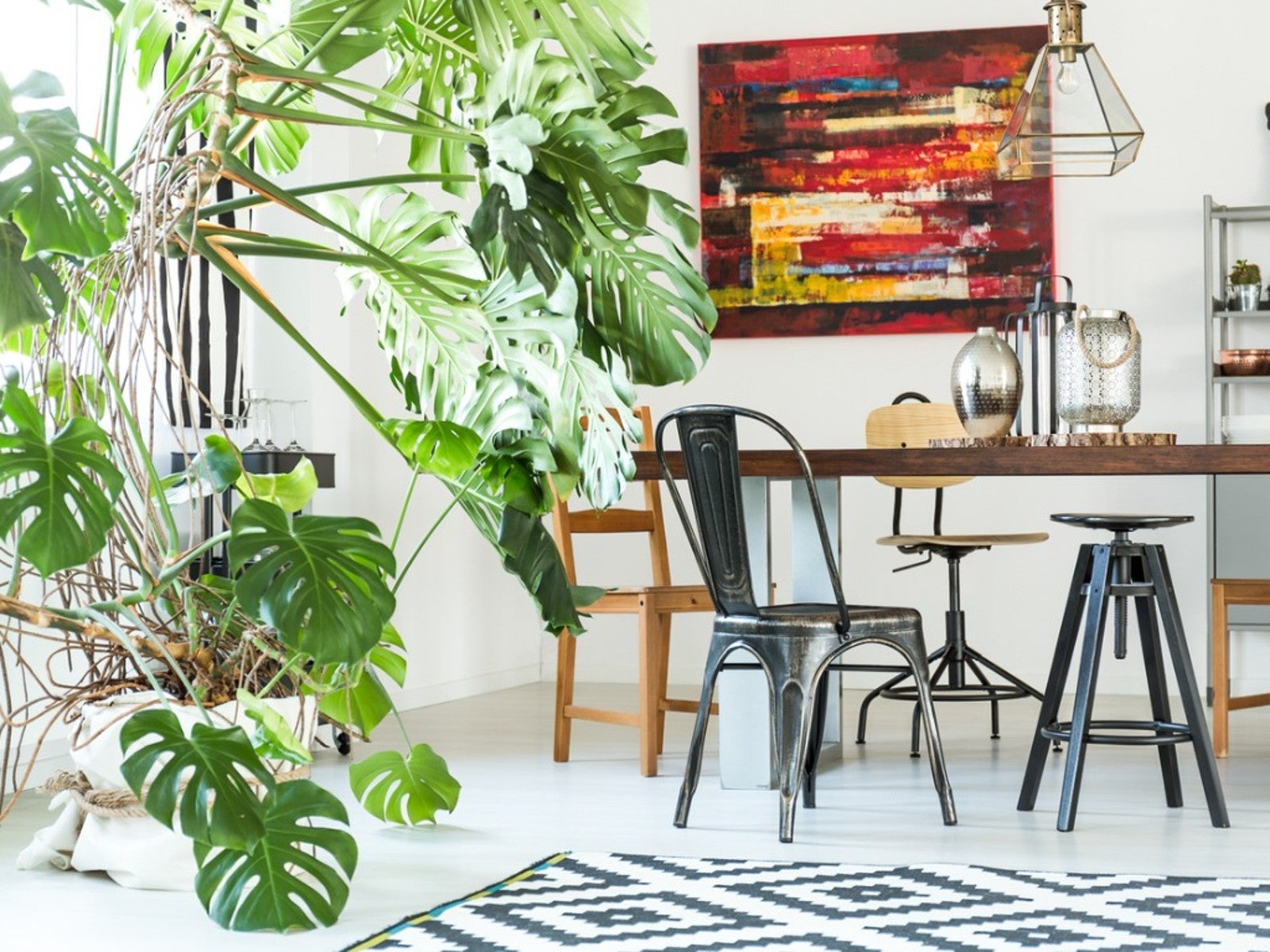Best Big Houseplants To Create An Indoor Oasis


Most houseplants are small. They can be plants that are naturally diminutive, dwarf varieties, or plants that grow smaller when contained. Just because small is the standard doesn’t mean you can’t grow some big or even huge indoor plants. If you have the space, why not?
Why Choose Big Houseplants?
Larger houseplants provide all the benefits of smaller plants but even more so. Being surrounded by green plants is good for your mental health and stress levels. Plants filter the air. And, growing plants successfully can be rewarding.
With big plants, you only multiply these effects. If you have the space for them, larger houseplants can make it feel like you’re living in a jungle or forest. Assess your space critically, though. Cramming too much into a room can start to feel claustrophobic or suffocating. Get bigger plants that still fit the size of your home.
Selecting Large Houseplants
The best large houseplants are, like their smaller counterparts, plants that tolerate indoor conditions. This usually means less light, indirect light, lower humidity, and container growing, but conditions vary of course.
Choose plants based on the conditions in your home. If you have a sunroom, go with plants that have high light needs. If not, look for large low light plants. Also make sure you understand exactly how big your selections will get. As much as you want one, giant houseplants might not fit in your space. Here are some options for all kinds of conditions that range from big to huge.
• Cast iron plant - Also known as bar room plant, Aspidistra elatior can grow to about three feet (0.9 m) tall and a little less wide. It is easy to grow in low light, dry air, and a range of temperatures. It has large, long, dark green foliage.
• Peace lily - This pretty tropical plant also has large, dark green leaves. It produces elegant white flowers. They do best in low, dappled light and prefer a lot of moisture. Look for larger cultivars for specimens that can grow several feet tall.
Sign up for the Gardening Know How newsletter today and receive a free copy of our e-book "How to Grow Delicious Tomatoes".
• Striped dracaena - Dracaena is a popular tropical houseplant with many cultivars. This one will grow up to ten feet (3 m.) tall and has striking striped foliage. Also known as corn plant, this dracaena needs only partial sunlight and does best in rich, moist soil.
• Ponytail palm - This is a Mexican native that grows up to eight feet (2.4 m.) in height and has a very unique look. The base of the stem is wide and bulb-like. It narrows upward, terminating in a “ponytail” of long, thin leaves. Save this plant for your sunniest window and keep it fairly dry.
• Umbrella tree - For something truly gigantic, try an umbrella tree. It is native to the rainforests of New Guinea and Australia and grows up to 50 (15.2 m.) feet in the wild. Despite its natural size, it grows well as a houseplant. Give it plenty of bright sun and moisture. You’ll also want to trim it regularly to keep it a reasonable size.
• Norfolk Island pine - Even bigger is the Norfolk Island pine, a native of just one island in the Pacific. Growing well over 100 feet (30.5 m.) there, it actually does well as a houseplant in a container. The evergreen foliage is soft and feathery rather than stiff and needle-like. It is an unusual and attractive house plant, but it might need supplemental light in winter.
• Citrus trees - A fun option is to grow a citrus tree indoors. You can find smaller grafted and dwarf varieties well suited to container growing. Some good options include tangerine, kumquat, Persian lime, and Meyer lemon. This is not necessarily a good option for beginner houseplant caregivers. Citrus can be picky indoors. They need several hours of direct light, well-drained soil with some acidity, just the right amount of water, and some humidity in the air.

Mary Ellen Ellis has been gardening for over 20 years. With degrees in Chemistry and Biology, Mary Ellen's specialties are flowers, native plants, and herbs.